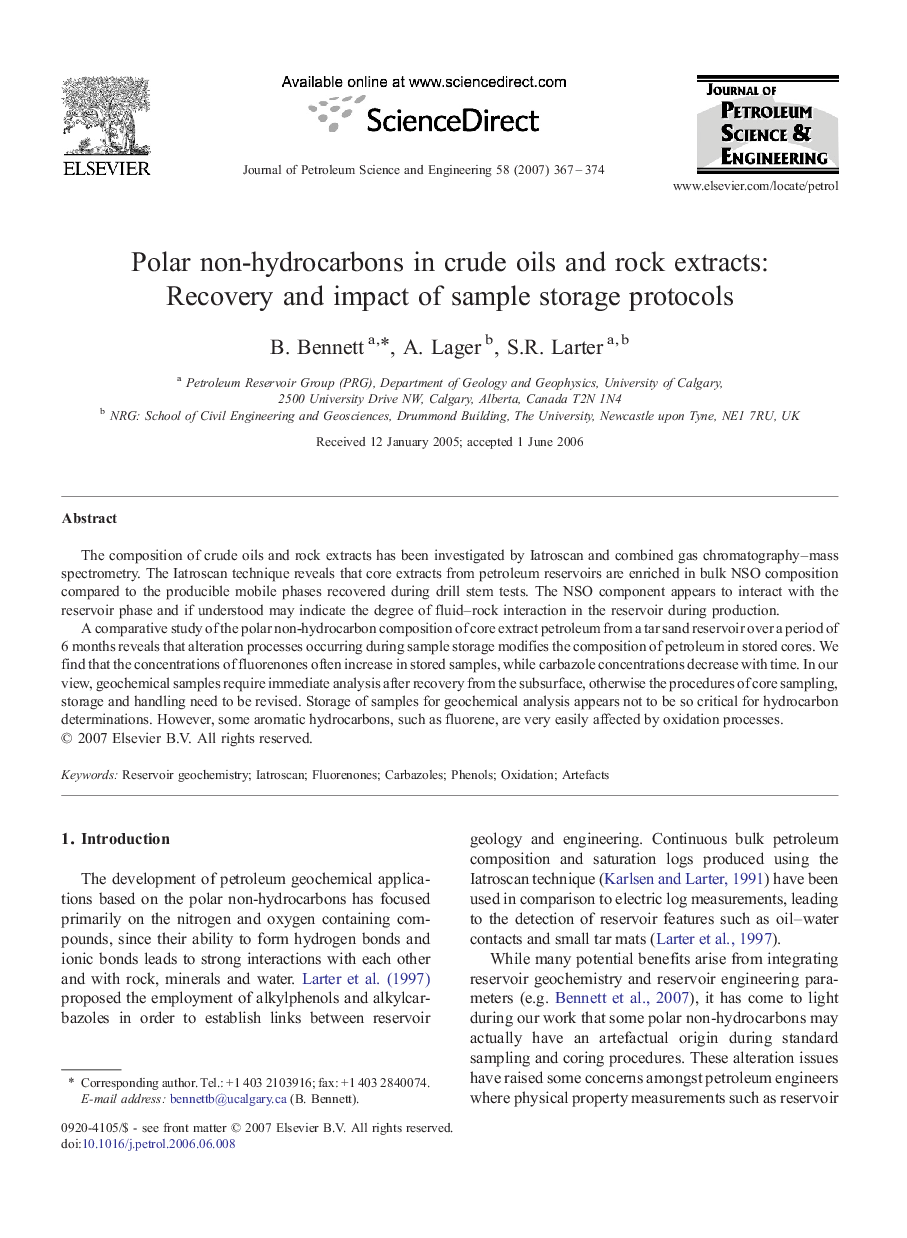| کد مقاله | کد نشریه | سال انتشار | مقاله انگلیسی | نسخه تمام متن |
|---|---|---|---|---|
| 1756363 | 1522889 | 2007 | 8 صفحه PDF | دانلود رایگان |

The composition of crude oils and rock extracts has been investigated by Iatroscan and combined gas chromatography–mass spectrometry. The Iatroscan technique reveals that core extracts from petroleum reservoirs are enriched in bulk NSO composition compared to the producible mobile phases recovered during drill stem tests. The NSO component appears to interact with the reservoir phase and if understood may indicate the degree of fluid–rock interaction in the reservoir during production.A comparative study of the polar non-hydrocarbon composition of core extract petroleum from a tar sand reservoir over a period of 6 months reveals that alteration processes occurring during sample storage modifies the composition of petroleum in stored cores. We find that the concentrations of fluorenones often increase in stored samples, while carbazole concentrations decrease with time. In our view, geochemical samples require immediate analysis after recovery from the subsurface, otherwise the procedures of core sampling, storage and handling need to be revised. Storage of samples for geochemical analysis appears not to be so critical for hydrocarbon determinations. However, some aromatic hydrocarbons, such as fluorene, are very easily affected by oxidation processes.
Journal: Journal of Petroleum Science and Engineering - Volume 58, Issues 3–4, September 2007, Pages 367–374